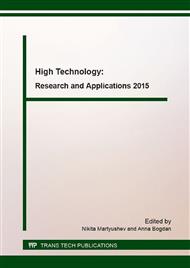p.27
p.32
p.37
p.42
p.47
p.51
p.56
p.60
p.65
Pressure Losses of Power-Law Fluid Flow through an Axisymmetric Sudden Contraction
Abstract:
In this paper the laminar stationary power-law fluid flow through an axisymmetric pipe contraction is investigated. The mathematical statement of the problem is formulated using stream function and vorticity variables. For obtaining a stationary solution the relaxation method with following realization of numerical algorithm based on finite difference alternative directions scheme is utilized. Implemented parametrical investigations allow obtaining the dependence of local resistance coefficients on Reynolds number, nonlinearity degree and piping contraction ratio.
Info:
Periodical:
Pages:
47-50
Citation:
Online since:
February 2016
Authors:
Price:
Сopyright:
© 2016 Trans Tech Publications Ltd. All Rights Reserved
Share:
Citation:


